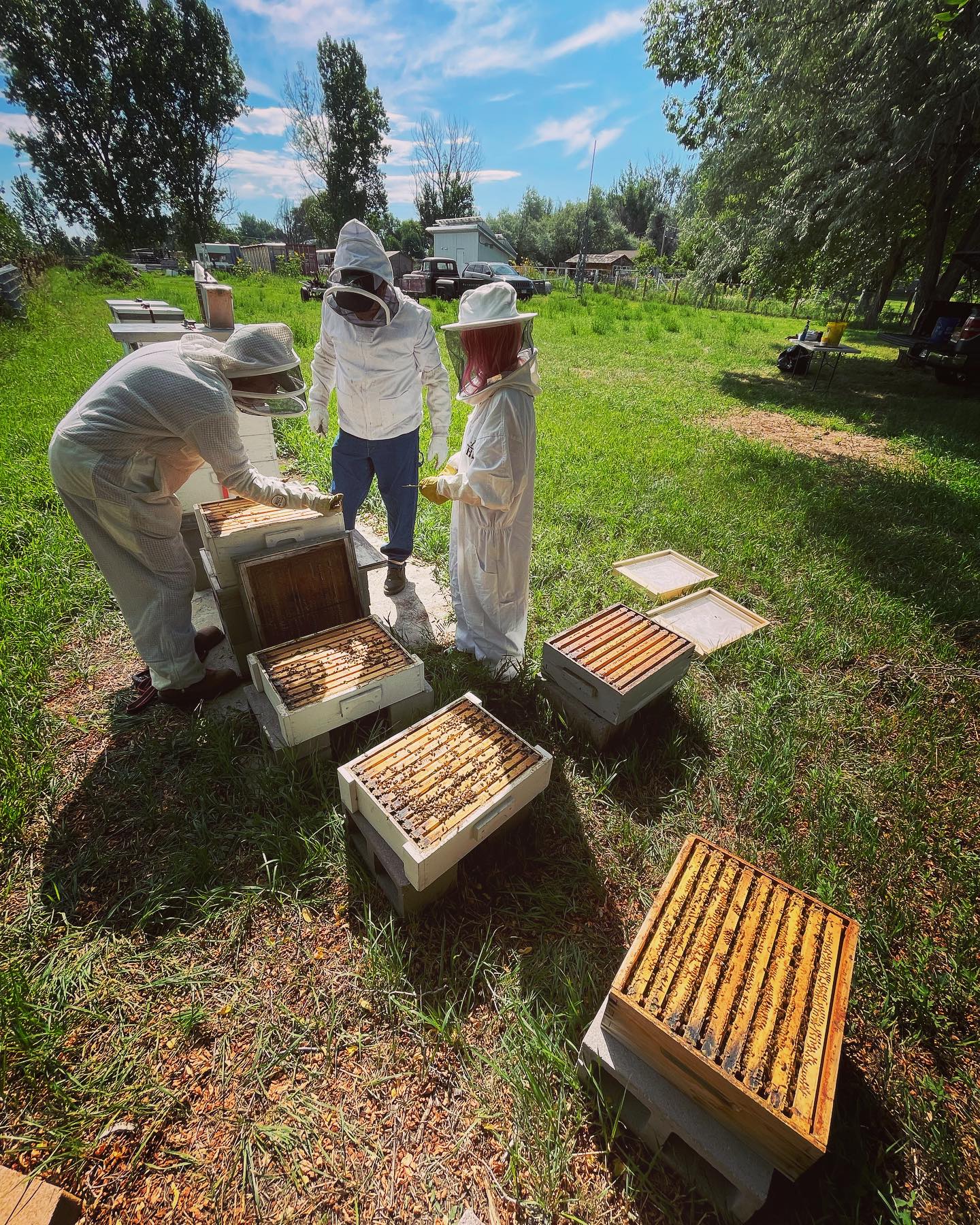This is the story of Charlie Peterson, his family, their farm, and a whole bunch of bees.
Fast forward: Charlie finished college, began a career in the tech industry, and married Carolyn. They had three daughters, keeping with the ‘C’ theme: Cassie, Chloe, and Carly. Moving out to the country was always in the back of their minds, but when Charlie and Carolyn jokingly sent each other a link to the same property listed for sale, it was too serendipitous to pass up. They called a realtor, and four days later, they were signing papers. ‘It’s one thing to have a dream, and it’s another to have it plop in front of you and say, “okay – execute now!”‘ said Charlie.

But execute they would! True to the nature of farm life, they started off with just a few chicks and things snowballed from there. They went to a chicken swap at a local feed store to trade in some roosters and came away with a goat! They quickly learned you can’t have just one goat, and it wasn’t long before they had a whole herd of friendly and playful Nigerian Dwarfs.
They named their property Capella Ranch, and during their first year Charlie began keeping bees and joined his local bee club. The state of Colorado has a ‘swarm hotline,’ allowing anyone spotting a swarm to call it in so a trained beekeeper can be dispatched to rescue it. Without fully knowing what they were getting into, Charlie and his family soon found themselves picking up swarms. In his second year, he came away with 8 colonies that successfully overwintered; the next year, it was 15; by the fourth year, it was 25. Eventually, Carolyn started to wonder, ‘What are you going to do with all these bees?
What is a honeybee swarm? Learn more here! Honeybee Swarms 101: Everything You Need to Know



Per the American Apitherapy Society Inc: APITHERAPY, or “bee therapy” (from the Latin apis which means bee) is the medicinal use of products made by honeybees. Products of the Honeybee include bee venom, honey, pollen, royal jelly, propolis, and beeswax. (What is Apitherapy – American Apitherapy Society, Inc)
Before long, the Bee Huts were born.

The Bee Huts at Capella Ranch are an innovative way for guests to get the same benefits that beekeepers do by being close to the hives. Each hut is designed so that guests can rest directly on top of four active hives, safely separated by benches made of stainless-steel mesh and slats of cedar. The huts have the feel of a sauna, and the hum of bees and smell of honey fills the air inside.
The Bee Hut experience is multifaceted. “First is the sound of the bees, you can hear them buzzing and the sound is very soothing and at a frequency that is very calming to your parasympathetic nervous system, which is the part that causes you to relax,” explained Charlie. “They also create a vibration with their buzzing, and because the hives are sitting on a platform that is inside the hut the vibration conducts so if you are laying on the bench some people can really feel it as a very soothing vibration.” Additionally, the bees generate an electromagnetic field with their activity, and the more attuned among us can feel that energy which some guests have called ‘psychedelic.’

And finally, there is the vapor. “The vapor itself is the key element,” said Charlie. “The bees will make honey by putting pollen and nectar into the honeycomb, then they spit into it to add moisture and mix it all up, and then the honey starts to cure. It has 70-80% moisture and they cure it until it gets to about 20% moisture and that’s when it is finally honey.” During the curing process, bees fan their wings to speed up evaporation, and it is that vapor—filled with amino acids, vitamins, minerals, and antioxidants—that guests at the Bee Huts get to breathe.
The Peterson’s don’t make any health claims about their Bee Huts, but they don’t deny any either. “Everybody finds their own thing that they are in tune with,” said Charlie. “But more than anything, when people come out of here, they look about as relaxed as they’ve probably ever been. We always get nervous that we’re gunna have to pour people out of the bee huts because they have this look of being half asleep,” Charlie laughed.


The structure of Charlie and Carolyn’s new business aligns with the farm lifestyle they sought, as well as their personalities: Carolyn loves chatting with guests and handles the business end of it while Charlie focuses on the bees and farm chores. Their daughter Cassie is a professional photographer who documents life on the farm through her images and handles the Capella Ranch website and social media.




What a wonderful and creative idea. I know that honey smell but I never thought about the sounds and the vibrations. Totally applaud this family in their ingenuity to share such an experience with others.
Thanks for your comment, Scottie, it was so neat to learn about them and their work! Bees are awesome in so many ways. 🙂